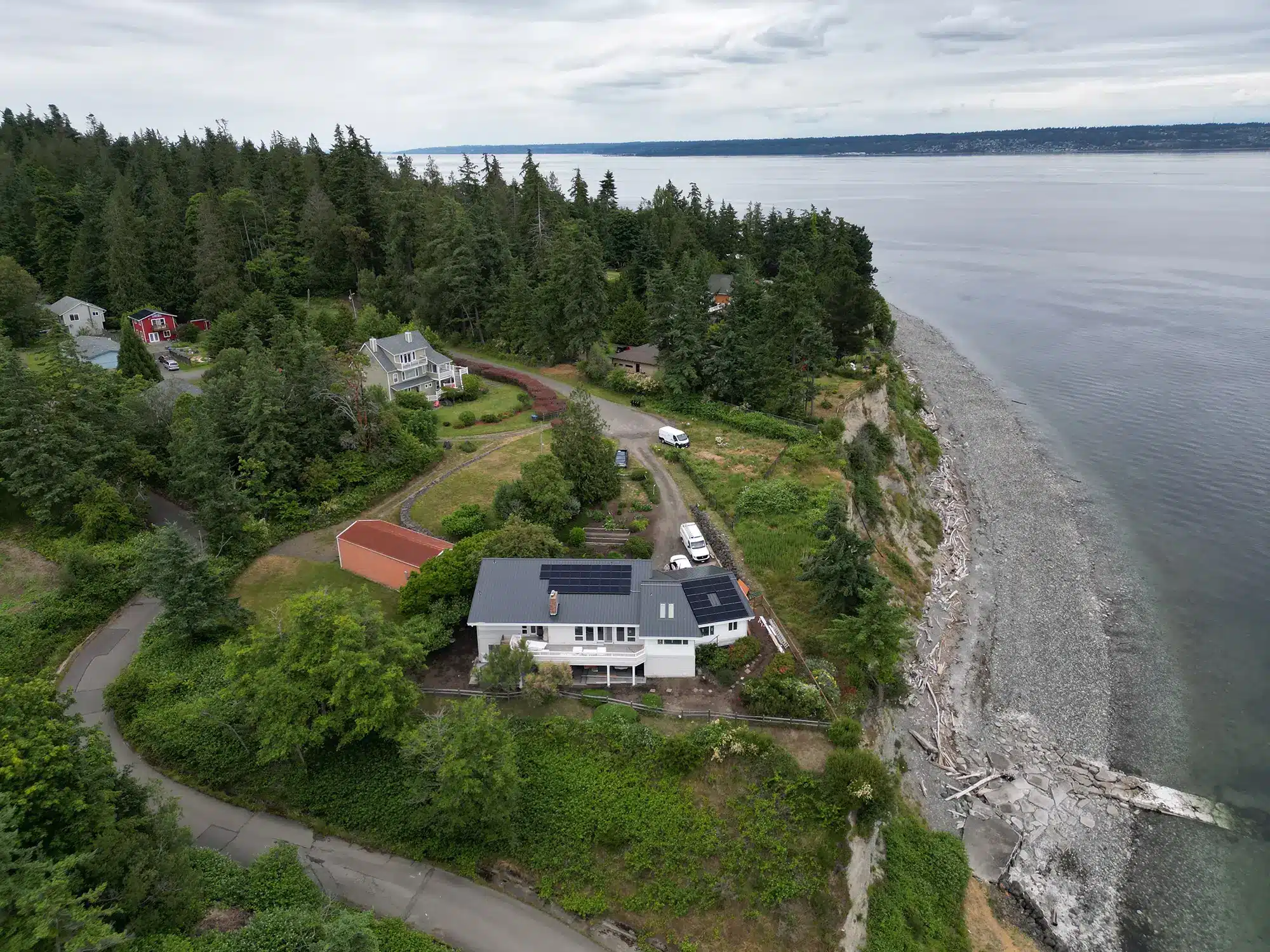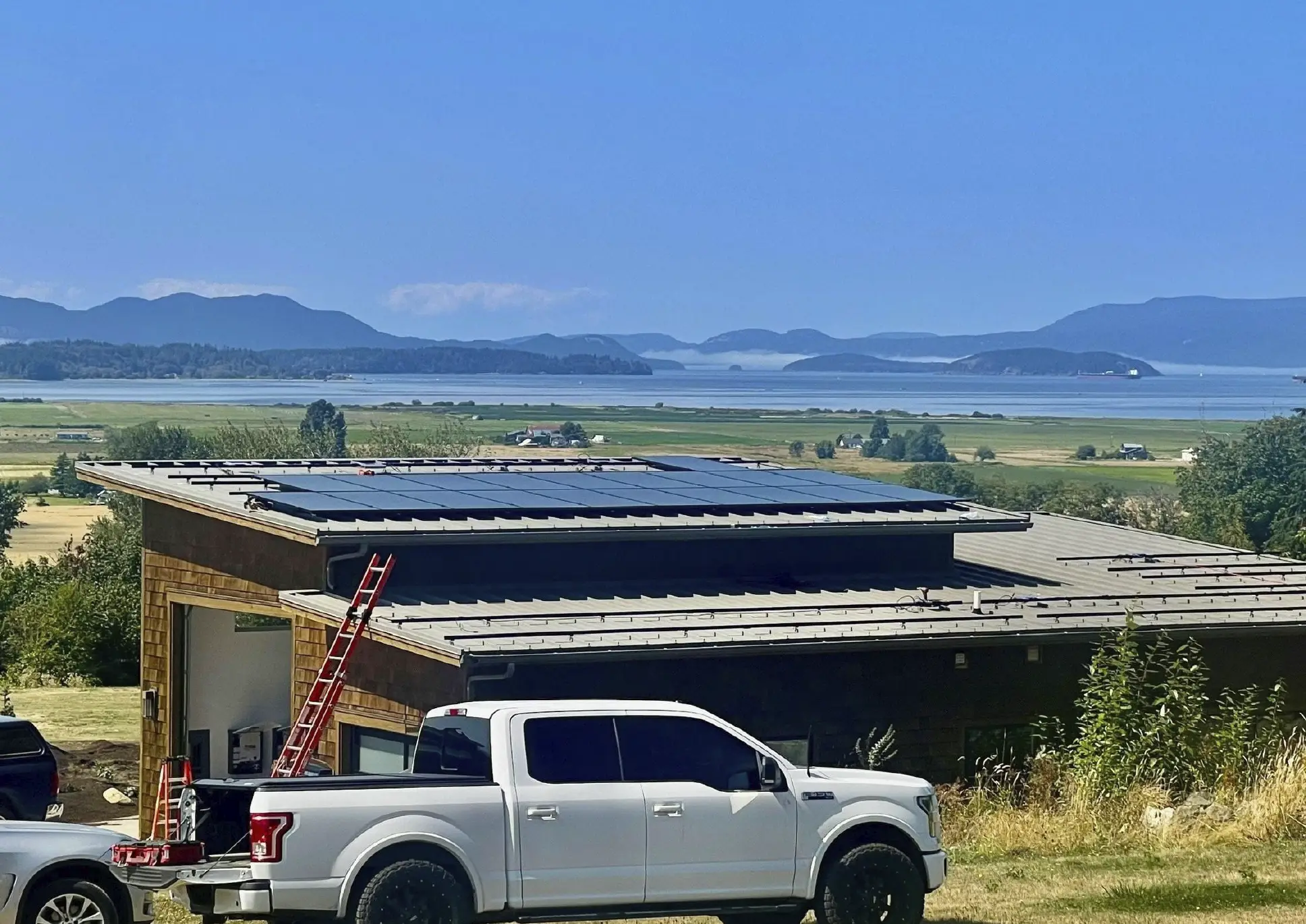In the ever-evolving landscape of renewable energy, bifacial solar panels are emerging as a game-changing technology, particularly suited for regions with unique climate conditions like Seattle and the entire Western Washington. These innovative panels offer significant economic benefits, leveraging the Pacific Northwest’s diffuse light to maximize energy production. Energy Sage’s Guide on Bifacial Solar Panels provides insightful information about this cutting-edge technology and its advantages for Seattle residents. (Energy Sage)
What Is Bifacial Solar Technology?
Bifacial solar panels are designed to capture sunlight from both their front and back sides. Unlike conventional panels that only collect light on one surface, bifacial technology takes advantage of reflective surfaces around the panel to gather additional sunlight reflected from below. This innovative approach not only increases energy output but also makes solar power more viable in areas frequently beset by cloudy weather. Photons reflect off various surfaces, which enhances energy generation from flat or flush-mounted panels on shingle roofs, further boosting overall efficiency.
The Power of Light, Even When the Sun Hides Behind Clouds
Living in Western Washington, homeowners are no strangers to the beauty of lush landscapes shrouded in mist and clouds. However, these same charming weather conditions pose a unique challenge for those interested in harnessing solar energy. Traditional solar panels, while effective, often see diminished performance under overcast skies. Enter bifacial solar technology—a game-changing solution for Seattle-area residents seeking to maximize their renewable energy potential.
Benefits for Homeowners in the Pacific Northwest
Enhanced Efficiency: Bifacial solar panels can produce up to 25% more energy than their traditional counterparts over the same period. For homeowners in the Seattle area, this means significantly improved performance, especially during the fall and winter months when sunlight is scarce. The panels benefit from their ability to capture light from multiple angles, making them a versatile and effective choice for various surfaces. Sustainable Waive
Ideal for Low Light Conditions: Western Washington is famous for its gray skies. Bifacial panels are specifically designed to capture diffuse light (the kind of light that filters through clouds) more effectively, ensuring more steady energy production even on overcast days. This ability to harness indirect sunlight makes them particularly advantageous in regions with frequent cloud cover. Consequently, they can maintain higher efficiency levels compared to traditional solar panels under similar conditions, maximizing energy output year-round.
Durable and Long-Lasting: These panels are constructed with the highest quality materials designed to withstand the humid and rainy conditions characteristic of the Puget Sound region, ensuring a longer lifespan and greater return on investment. The robust design also provides resistance against harsh weather conditions, such as strong winds and heavy snowfall. Furthermore, their durability means reduced maintenance costs and fewer replacements over time, making them a cost-effective choice for homeowners.
Aesthetic, Versatile Installation: With their transparent design, bifacial panels offer a more aesthetically pleasing option for homeowners concerned about the appearance of solar installations. They can be integrated into a variety of settings, from ground mounts in gardens to rooftops, without compromising the home’s visual appeal.
Environmental Impact: By optimizing solar energy production, bifacial technology not only lowers electricity bills but also significantly reduces the carbon footprint of a home, aligning with Seattle’s strong environmental ethos. This reduction in greenhouse gas emissions contributes to cleaner air and a healthier environment for the local community.
Financial Incentives and Rebates: Homeowners in Washington State can take advantage of various financial incentives and rebates that make the installation of bifacial solar panels even more cost-effective. Programs like the Federal Solar Investment Tax Credit (ITC) can significantly reduce the upfront cost of solar installations.
Boosting Property Value: Homes equipped with advanced solar technology like bifacial panels often see an increase in property value. This added value makes solar not just an energy decision, but a wise investment in the overall worth of the home. Additionally, potential buyers are increasingly looking for energy-efficient features, making solar-equipped homes more attractive in the real estate market.
Adaptability and Future-Proofing: As energy needs evolve, bifacial solar panels offer a scalable solution that can be easily integrated with other renewable energy systems, such as solar batteries and electric vehicle (EV) charging stations. This future-proofing ensures that homeowners can adapt to new technologies and energy solutions as they become available. For more detailed information on the benefits and future-proofing capabilities of bifacial solar panels, you can refer to Energy Bill Cruncher’s Guide on Bifacial Solar Panels.
Making the Most of Seattle’s Daylight
While Seattle might not boast the sunniest days throughout the year, the unique diffuse light qualities of the area are a perfect match for bifacial solar technology. Homeowners in the Puget Sound area now have the opportunity to lead the way in adopting a solar solution that is as resilient and adaptable as they are.
Embracing bifacial solar technology is more than just an investment in renewable energy—it’s a commitment to a sustainable future and a cleaner, greener planet. Discover how you can make the switch to bifacial solar panels today and illuminate your home with the power of the Pacific Northwest’s daylight, no matter the weather.
Additional Resources
Energy Sage Benefits of Bifacial solar Panels
By staying informed and making educated decisions, homeowners in the Pacific Northwest can leverage bifacial solar technology to its fullest potential, achieving greater energy independence and contributing to a more sustainable future.

